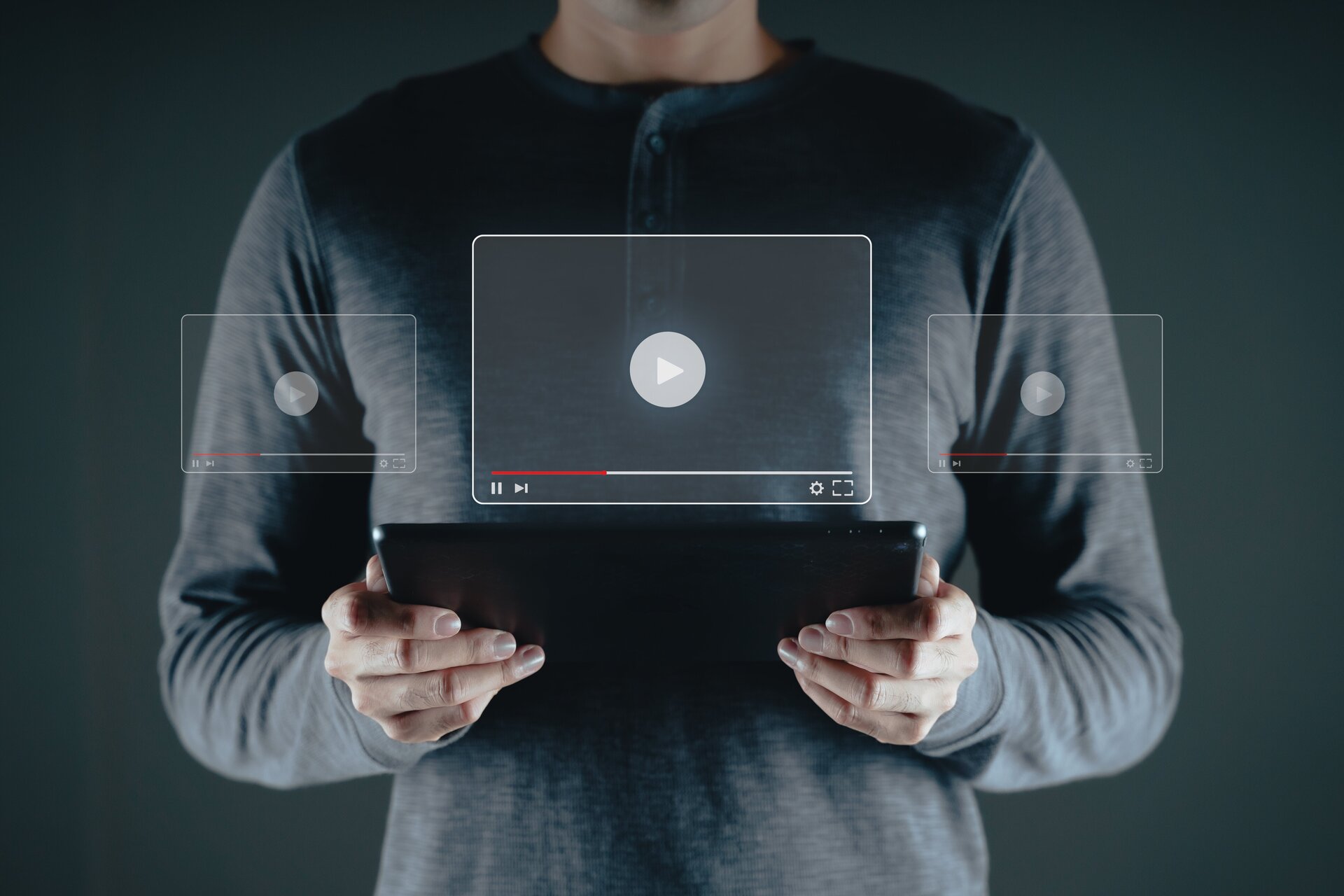YouTube, the globe’s second-largest search engine and the paramount video-sharing platform, has transformed into a fertile ground for content creators, marketers, and enterprises. With a staggering two billion monthly logged-in users, it presents an expansive audience to engage with. Nevertheless, as competition on the platform intensifies, content creators are turning to the realm of YouTube automation to streamline their operations, economize time, and elevate their content strategies.
In this extensive guide, we will embark on a thorough journey into the intricacies of YouTube automation, delving into its manifold facets, advantages, hazards, best practices, and the future horizon of automation within the platform.
The Advantages of YouTube Automation
Time Efficiency: Among the key benefits of YouTube automation is the significant time saved. Content creators can schedule video uploads, automate responses to comments, and handle social media posts in advance, freeing up their time to focus on creating high-quality content.
Consistency: Maintaining a reliable upload schedule is crucial for retaining and growing an audience on YouTube. Automation ensures that videos are consistently published, which keeps viewers engaged.
Improved SEO: Automation tools can assist in tasks like keyword research, generating video tags, and optimizing video titles, descriptions, and metadata. This increases the likelihood of videos appearing in search results and reaching a broader audience.
Analytics and Insights: Automated analytics tracking provides content creators with valuable data on video performance, audience demographics, and viewer engagement. This data serves as a foundation for refining content strategies and optimization efforts.
Audience Engagement: Automated responses to comments and messages enable content creators to maintain meaningful interactions with their audience, fostering a sense of community around their channel.
Monetization Opportunities: Effective channel management accelerates growth, making it easier to meet YouTube’s monetization requirements, such as the 4,000 watch hours and 1,000 subscribers threshold.
YouTube Automation Tools and Techniques
Content Scheduling: Content creators can harness tools like TubeBuddy, Hootsuite, or Buffer to orchestrate the timing of video uploads, ensuring a consistent posting schedule devoid of manual intervention.
Keyword Research and SEO: Tools like VidIQ and SEMrush serve as invaluable aides for identifying high-performing keywords and optimizing video titles, descriptions, and tags to enhance search visibility.
Analytics Tracking: YouTube Studio provides comprehensive analytical data, while Google Analytics further enriches creators’ understanding of their audience’s behavioral patterns.
Audience Engagement: Chatbots and automated responses proficiently manage routine comments and messages, thus liberating the creator’s time for more substantial interactions.
Thumbnail Creation: Automation tools like Canva, Adobe Spark and Visme expedite the process of generating eye-catching thumbnails, ensuring that videos stand out in search results and recommendations.
Social Media Promotion: Tools such as SocialBee and SocialBakers empower creators to automate the dissemination of video links across diverse social media platforms.
Risks and Ethical Considerations
While YouTube automation offers creators numerous advantages, it is crucial to be aware of potential risks and ethical dilemmas:
- Quality vs. Quantity: Excessive automation may unintentionally shift the focus from quality to quantity. Creators must carefully strike a balance to maintain the appeal and substance of their content.
- Viewer Engagement: Over-automation of comment responses and messages can undermine authentic engagement with the audience, potentially hindering community-building efforts.
- Algorithmic Sensitivity: YouTube’s recommendation algorithm can penalize channels that excessively rely on automation if it detects spammy or low-quality content.
- Ethical Considerations: The automation of content generation raises ethical questions about the authenticity and transparency of a creator’s work. Audiences often prefer content that is genuinely created by humans.
- Privacy and Data Security: Content creators must exercise caution regarding the data collected by automation tools and ensure strict compliance with privacy regulations to protect user information.
- Copyright and Content Ownership: Automation-driven content generation could inadvertently infringe upon copyrights or intellectual property rights. Creators are responsible for ensuring the originality or proper licensing of their content.
Best Practices for YouTube Automation
To maximize the benefits of YouTube automation while avoiding potential pitfalls, here are some recommended best practices:
- Prioritize Quality: Make quality content your top priority. Automation should enhance your work, not replace it. Dedicate time to create engaging and informative videos.
- Foster Genuine Engagement: While automation can handle routine tasks, it’s essential to authentically engage with your audience when needed. Personally respond to meaningful comments and messages to nurture a loyal community.
- Monitor Analytics Continuously: Regularly review analytics data to understand your audience better and adjust your content strategies accordingly. Data serves as a guide, helping you identify trends, preferred topics, and areas that need improvement.
- Adhere to Platform Policies: Familiarize yourself with YouTube’s automation policies and align your practices with their guidelines. Staying informed about policy changes is crucial.
- Embrace Continuous Improvement: Experiment with various automation tools and techniques to find what works best for your channel. Continuously refine your automation processes based on performance feedback.
- Be Transparent: Maintain open communication with your audience regarding your use of automation tools and techniques. Transparency builds trust, and viewers appreciate insights into your content creation process.
The Future of YouTube Automation
As YouTube forges ahead, content creators may witness a profusion of automation tools and methodologies. Several trends and potential developments on the horizon of YouTube automation encompass:
- Advanced AI and Machine Learning: Automation tools may grow increasingly intelligent, providing assistance in content ideation, video editing, and even script composition.
- Personalized Content Delivery: Automation could facilitate the delivery of personalized content recommendations to viewers, enhancing engagement and retention rates.
- Augmented Reality (AR) and Virtual Reality (VR): Automation may play a pivotal role in the creation of immersive AR and VR content, thereby enriching the viewer experience.
- E-commerce Integration: Automation tools may facilitate seamless e-commerce integration within videos, permitting creators to monetize directly through product endorsements and sales.
- Real-time Analytics: Creators may gain access to real-time analytical data, enabling instantaneous adjustments to content and engagement strategies.
- Content Localization: Automation could expedite content translation and localization, broadening global reach and accessibility.
Conclusion
In this comprehensive exploration, we have delved deeply into the realm of YouTube automation, understanding its benefits, recognizing its potential risks, and grasping the principles of best practices. YouTube automation serves as an invaluable tool for content creators striving to efficiently manage their channels while enhancing their overall effectiveness. When wielded thoughtfully, automation tools and techniques offer time savings, an enhancement of content quality, and the amplification of a channel’s growth potential.
However, it is of utmost importance to strike a careful balance between automation and genuine human interaction to preserve authenticity and cultivate a dedicated audience. By diligently following best practices and staying informed about YouTube’s automation guidelines, creators can harness the power of automation to thrive in this ever-evolving platform.
As YouTube continues its ongoing evolution, creators must remain adaptable, skillfully integrating automation into their content strategies. Embracing emerging automation trends will empower creators to remain competitive and consistently expand their channels in this dynamic digital landscape.
Frequently Asked Questions
Are there any legal restrictions on using automation tools for YouTube?
Yes, there can be legal restrictions depending on how automation tools are used. For example, using automation to artificially inflate views, likes, or engagement on videos can violate YouTube’s terms of service and may be subject to legal action.
Can YouTube automation tools help with copyright issues?
While some automation tools can help with content identification and management, they cannot guarantee protection against copyright claims. Creators should ensure they have the rights to use any copyrighted material in their videos or obtain proper licenses.
Are there free YouTube automation tools available?
Yes, there are free YouTube automation tools available, but they often come with limitations compared to paid options. Creators can explore free tools like YouTube Studio for analytics or use features like scheduled uploads, but more advanced automation may require paid software or services.
How can I measure the ROI (Return on Investment) of using YouTube automation tools?
Measuring the ROI of automation tools can be complex, as it depends on your goals. You can track metrics such as increased subscribers, views, or ad revenue compared to the cost of the automation tools and the time saved. However, remember that some benefits, like improved content quality, can be challenging to quantify.
What should I do if my channel gets flagged for excessive automation by YouTube’s algorithm?
If your channel is flagged for excessive automation, it’s essential to review your automation practices and ensure they comply with YouTube’s policies. Adjust your automation settings as needed, and if necessary, reach out to YouTube support for guidance on resolving the issue.
Are there any risks associated with using third-party automation tools for YouTube?
Yes, using third-party automation tools can pose risks to your channel’s security and data privacy. Be cautious when granting access to your YouTube account and research the reputation and security measures of any third-party tool you intend to use.
Can automation help with video monetization strategies?
Yes, automation can assist in video monetization by helping you optimize video metadata for better search visibility, analyze ad performance, and schedule promotional content. However, the primary driver of monetization is still high-quality content and a substantial, engaged audience.
How can I strike the right balance between automation and personal engagement with my audience?
Striking the right balance involves using automation for repetitive tasks like video scheduling and analytics tracking, while reserving personal engagement for meaningful interactions with your audience. Regularly check your comments and messages, respond to important queries, and participate in community building activities.
Are there specific niches or types of YouTube channels that benefit more from automation?
Automation can benefit various types of YouTube channels, but it may be particularly useful for channels with frequent content updates, large audiences, or those focusing on data-driven content such as tutorials, reviews, or educational content.
How can I keep up with the latest trends and developments in YouTube automation?
To stay informed, follow YouTube’s official blog and creator updates, subscribe to YouTube-related forums and newsletters, and engage with the YouTube creator community. Additionally, consider attending webinars or conferences focused on digital marketing and content creation.

